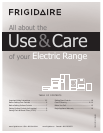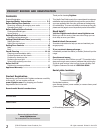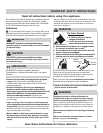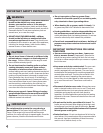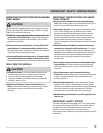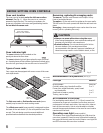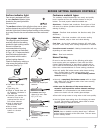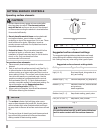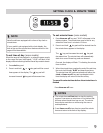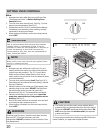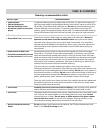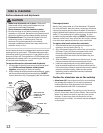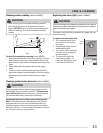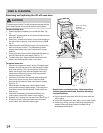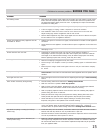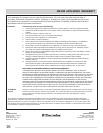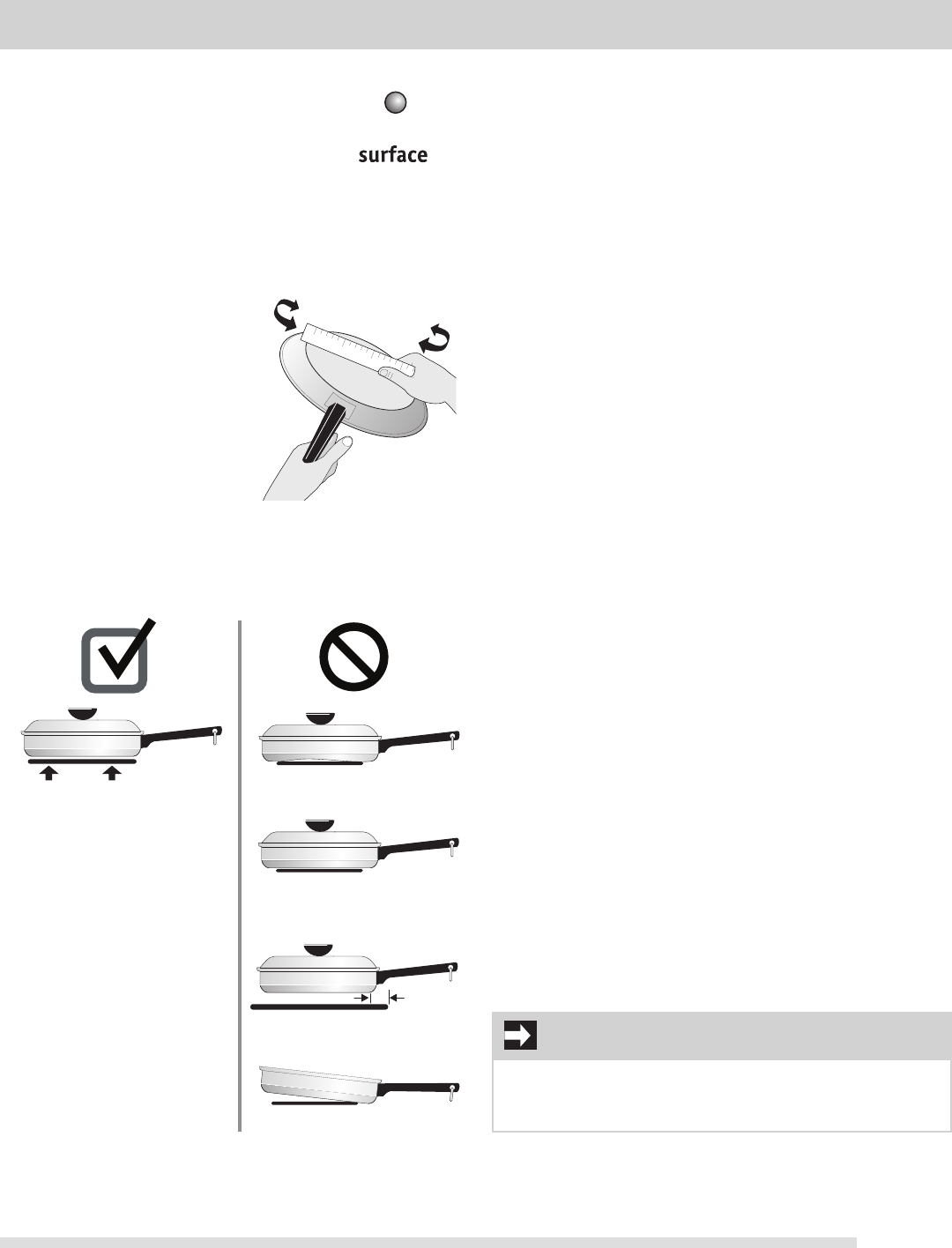
7
Use proper cookware
Fig. 2
BEFORE SETTING SURFACE CONTROLS
• Flat bottom and straight
sides.
• Tight fitting lids.
• Weight of handle does not
tilt cookware. Cookware is
well balanced.
• Cookware size matches the
amount of food to be
prepared and the size of
the surface element.
• Made of material that
conducts heat well.
• Easy to clean.
• Always match cookware
bottom to element
diameter.
• Curved and warped pan
bottoms.
• Cookware overhangs
element by more than
1/2” (1.27 cm).
• Cookware is smaller than
element.
• Cookware weight is not
balanced.
Fig. 1
Surface indicator light
Your range is equipped with one
or more surface indicator lights
located on the panel just above
the oven door.
The surface indicator light will glow when one or more
surface elements are turned ON. A quick glance at this
indicator light when finished surface cooking on the cooktop
is an easy check to be sure all surface controls are turned
OFF.
The size and type of cookware
used will influence the setting
needed for best cooking results.
Be sure to follow the
recommendations for using
proper cookware as illustrated
in Figs. 1 & 2. Cookware should
have flat bottoms that make
good contact with the entire
surface heating element .
Check for flatness by rotating a
ruler across the bottom of the
cookware (See Fig. 1).
Home Canning
Be sure to read and observe all the following points when
home canning with your appliance. Check with the USDA
(United States Department of Agriculture) website and be
sure to read all the information they have available as well as
follow their recommendations for home canning procedures.
• Use only quality flat bottom canners when home canning.
Use a straight-edge to check canner bottom (see
“Cookware material types” in the Before setting surface
controls section).
• Use only a completely flat bottom canner with no ridges
that radiate from the bottom center when home canning
using a ceramic cooktop.
• Make sure the diameter of the canner does not
exceed 1 inch beyond the surface element markings
or burner. It is recommended to use smaller diameter
canners on electric coil and ceramic glass cooktops.
• Start with hot tap water to bring water to boil more quickly.
• Use the highest heat setting when first bringing the water
to a boil. Once boiling is achieved, reduce heat to lowest
possible setting to maintain that boil.
IMPORTANT
NEVER place or straddle a cooking utensil over 2 different
surface cooking elements at the same time. This can cause
uneven heating results.
Cookware material types
The cookware material determines how evenly and quickly
heat is transferred from the surface element to the pan
bottom. The most popular materials available are:
Aluminum - Excellent heat conductor. Some types of food
will cause it to darken (Anodized aluminum cookware resists
staining & pitting).
Copper - Excellent heat conductor but discolors easily (See
Aluminum).
Stainless - Slow heat conductor with uneven cooking
results. Is durable, easy to clean and resists staining.
Cast Iron - A slow heat conductor however will retain heat
very well. Cooks evenly once cooking temperature is reached.
Porcelain-enamel on metal - Heating characteristics will vary
depending on base material.
Glass - Slow heat conductor.



